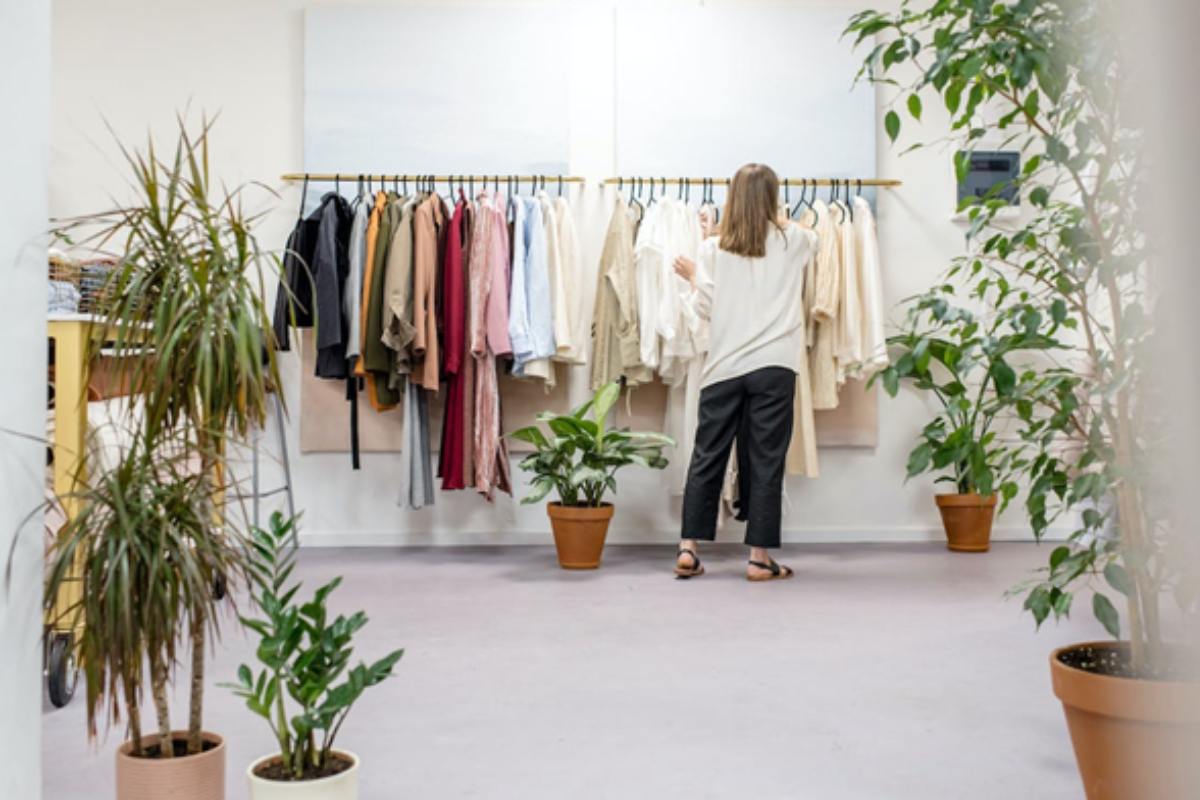In an era defined by increasing environmental awareness and a growing desire for ethical consumption, the fashion industry stands at a crossroads. The pursuit of fleeting trends, coupled with the relentless cycle of fast fashion, has contributed to environmental degradation, worker exploitation, and overflowing landfills. However, within this complex landscape, individuals hold the power to make meaningful changes.
Sustainability is more than a buzzword. It represents a fundamental change in the way we approach clothing, style, and self-expression. It’s about embracing a mindset that values quality, longevity, and conscious choices.
In this article, we will cover a range of practical strategies, from prioritizing quality over quantity, embracing secondhand treasures, and supporting ethical brands to building a capsule wardrobe. By the time you finish reading this piece, you will have all of the knowledge and motivation necessary to embark on your sustainable fashion adventure. Let’s dive right in and discover ways your wardrobe can become an indicator of environmental responsibility.
Table of Contents
Support Ethical and Sustainable Brands
Supporting ethical and sustainable brands is a pivotal step in revolutionizing the fashion industry. These conscientious companies prioritize fair labor practices, ensuring that garment workers are paid decent wages and operate in safe, humane conditions. Their dedication to transparency ensures that every step in their supply chains, from material sourcing and production to manufacturing and distribution, is accounted for. When you patronize such brands, you become part of an effort toward more ethical and eco-friendly fashion practices.
For instance, Cider is a clothing brand that has garnered significant attention for its sustainable and ethical approach to clothing. However, is Cider clothing legit? Rest assured, it is indeed authentic. Purchasing sustainable clothing from Cider is not only a fashionable choice but also a responsible and impactful one. By choosing their products, you contribute to the reduction of harmful environmental impacts such as water pollution, excessive resource consumption, and greenhouse gas emissions associated with traditional fashion.
From using eco-friendly materials like organic cotton and recycled fabrics to implementing innovative recycling programs, brands like these are at the forefront of creating clothing that is kinder to both people and the planet. By voting with your wallet for ethical and sustainable practices, you incentivize the broader industry to shift away from harmful practices and embrace a future where fashion is synonymous with responsibility and style.
By opting for ethical and sustainable brands, you’re not just making a fashion statement. Rather, your choices set an example for responsible and sustainable fashion within the industry, contributing towards creating a more equitable, environmentally-friendly future.
Prioritize Quality Over Quantity
One key step toward building a more eco-friendly wardrobe is prioritizing quality over quantity. Fast fashion’s high production volumes and rapid style changes have a serious environmental impact.
Instead of succumbing to fleeting trends, invest in high-quality pieces designed to last. Although these may come at a higher cost initially, their durability will save money long term while decreasing landfill waste.
Embrace Secondhand Shopping
According to reports, the global secondhand apparel market will grow 127% by 2026. Secondhand shopping is not only budget-friendly but also a fantastic way to reduce your wardrobe’s environmental footprint. Thrift stores, consignment shops, and online resale platforms offer a wide array of pre-loved clothing items.
By purchasing secondhand, you extend the life cycle of garments, preventing them from being discarded prematurely. This not only conserves resources but also reduces the demand for new clothing production, which is often resource-intensive and contributes to pollution.
Choose Sustainable Fabrics

Opting for fabrics made of eco-friendly materials like organic cotton, hemp, Tencel, or bamboo, will help make your wardrobe more sustainable. These materials typically use less water and chemicals during their production processes and thus have less of an environmental footprint than their alternatives.
Additionally, they often have biodegradable or recyclable properties, minimizing their impact when they eventually wear out. By selecting sustainable fabrics, you’re supporting a more responsible fashion industry.
Build a Capsule Wardrobe
Building a capsule wardrobe is an effective strategy for creating a sustainable and functional closet. A capsule wardrobe consists of an edited selection of versatile pieces designed to create multiple outfits.
Focusing on quality, versatility, and items that truly represent your style can reduce the overall item count significantly. This approach not only simplifies your daily dressing routine but also reduces the temptation to make impulsive purchases to keep up with fleeting trends.
Mend and Care for Your Clothing
Extending the life of your garments is a crucial aspect of sustainability. Learn basic sewing skills to mend minor damages like loose buttons or small tears. Instead of discarding damaged clothing, repair it and give it a second life.
Proper care is also essential; follow care instructions on labels, wash in cold water, and line dry whenever possible. Overwashing, using excessive heat, and harsh detergents can accelerate wear and tear, leading to more frequent replacements.
Final Thoughts
Making your wardrobe more sustainable is a powerful way to contribute to a greener, more ethical world. By prioritizing quality over quantity, choosing sustainable fabrics, supporting ethical brands, and building a capsule wardrobe, you can reduce your fashion-related impact on the environment and promote a more responsible fashion industry.
These steps empower you to make mindful choices, reduce waste, and maintain a stylish and sustainable wardrobe. Remember, each purchase you make is an opportunity to support a better future for both the planet and the fashion industry.

